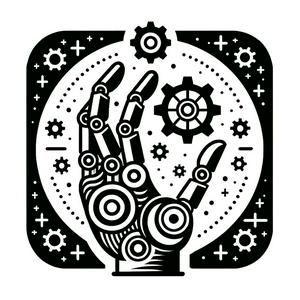Robo Wars: China's Cheap Bots Invade as US Makers Struggle to Compete
This is you Robotics Industry Insider: AI & Automation News podcast.# Robotics Industry Insider: AI & Automation News – November 30, 2025Welcome to Robotics Industry Insider, where we break down the latest developments shaping the future of automation and artificial intelligence. I'm your host, and today we're diving into a transformative moment for the robotics industry.The industrial automation sector is experiencing remarkable momentum as we head into the final month of 2025. The global industrial automation market has reached approximately 226.8 billion dollars this year, up from 206 billion in 2024, with projections suggesting it will climb to 378.57 billion by 2030. This explosive growth reflects a fundamental shift in how manufacturers approach production efficiency and competitiveness.Tariffs are reshaping the manufacturing landscape in unprecedented ways. As import costs surge, companies are accelerating reshoring efforts, and robotics has become the linchpin of this strategy. According to recent analysis from Industry Today, tariffs incentivize automation at scale, with manufacturers installing over 44,000 industrial robots in 2023 alone. North American companies ordered 9,064 new industrial robots in just the first quarter of 2025, valued at 580.7 million dollars, demonstrating sustained appetite for automation solutions.However, there's a competitive challenge brewing. Standard Bots CEO Evan Beard highlighted a critical issue at a congressional joint economic hearing last week: U.S. robotics quotes are ten times higher than Chinese suppliers. This cost disparity threatens American manufacturers' ability to compete as demand for automation intensifies. The concern is that while Chinese robots aren't currently dominating U.S. imports, inexpensive products will eventually flood the market unless action is taken.On the technology front, the convergence of artificial intelligence and robotics is accelerating. Major developments emerged at the International Robot Exhibition 2025, where companies like Flexiv made their first Japanese exhibition with five flagship demonstrations, while Nidec Drive Technology showcased comprehensive six-axis robotic solutions combining precision gearboxes with multi-sensor technology.The industry landscape is also consolidating through strategic partnerships. Service robotics is witnessing massive investments in multipurpose robots, particularly humanoid systems with enhanced AI capabilities. Though current sales remain limited, these platforms are establishing technological foundations that will benefit broader robotic advancements in perception and manipulation.For manufacturers, the takeaway is clear: automation represents not just cost-cutting but operational resilience. A Deloitte survey of 600 manufacturing executives revealed that 80 percent plan to invest 20 percent or more of their improvement budgets in automation technologies. Success in this new era requires simultaneous investment in equipment and people, with companies upskilling teams in mechatronics, data analysis, and process engineering.Thank you for tuning in to Robotics Industry Insider. Join us next week for more breaking developments in automation and artificial intelligence. This has been a Quiet Please production. For more, check out Quiet Please dot A I.For more http://www.quietplease.aiGet the best deals https://amzn.to/3ODvOtaThis content was created in partnership and with the help of Artificial Intelligence AI


